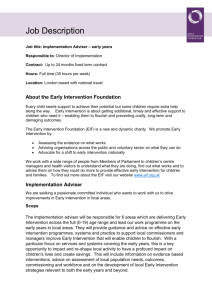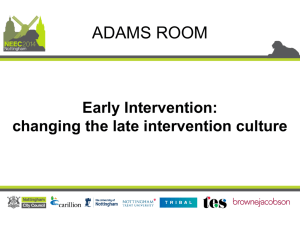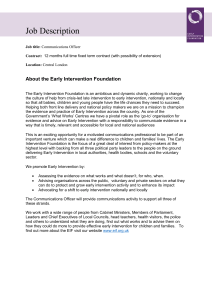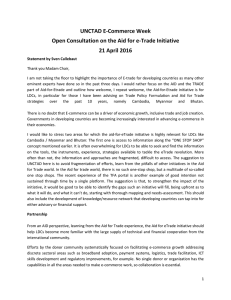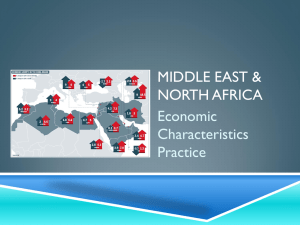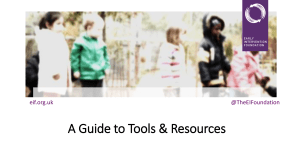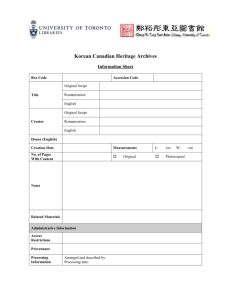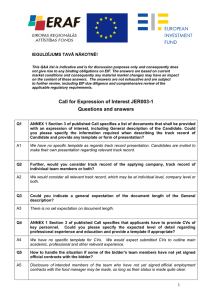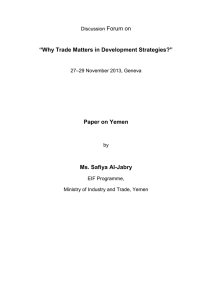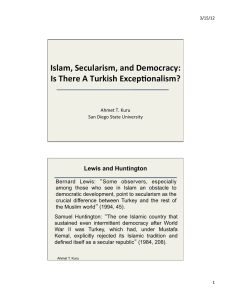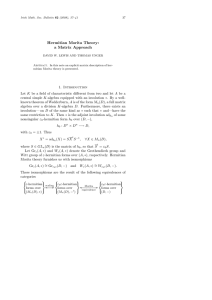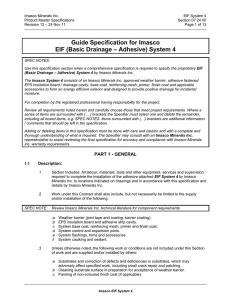Discussion Forum on « Why Trade Matters in Development Strategies »
advertisement
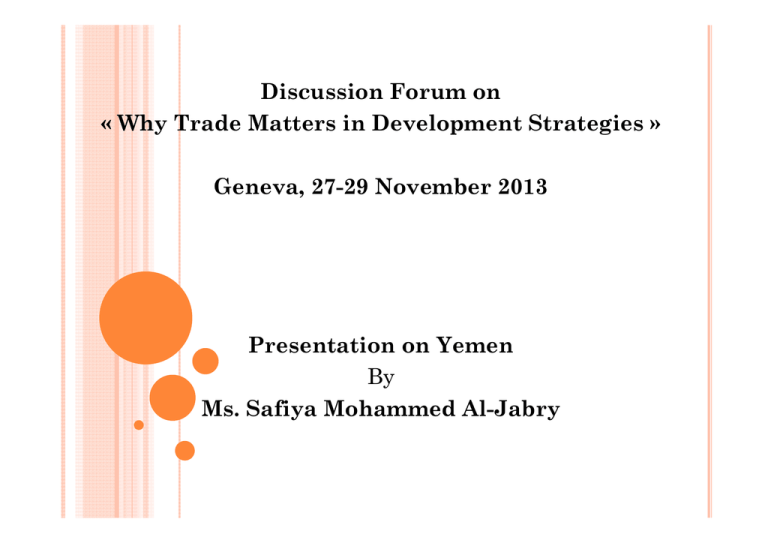
Discussion Forum on « Why Trade Matters in Development Strategies » Geneva, 27-29 November 2013 Presentation on Yemen By Ms. Safiya Mohammed Al-Jabry INTERGRATING TRADE IN YEMEN’S NATIONAL STRATEGIES Safiya Mohammed Al-Jabry EIF Programme MoIT Location: Southwest Asia btw Oman and Saudi Arabia. Situated at the entrance of Bab-elMandeb Population: 23.58 million Population growth rate: 2.5% Ethnic groups: Arab, Afro-Arab, South Asians, Europeans Religions: Islam, Jews, Christians and Hindus Language: Arabic Three main economic sectors of Yemen are oil, agriculture and fisheries Major exports: crude oil, coffee, dried and salted fish and liquefied natural gas which make up a total of USD $ 7.598 billion Major imports: food and live animals, machinery, equipment and chemicals which make up a total of USD $ 8.893 billion Major export partners: China, Thailand, India, South Korea, Japan, US, South Africa and UAE Major import partners: UAE, China, Saudi Arabia, Kuwait, India, US and Turkey. CHALLENGES Rentier state Centralized political and economic decisions due to patrimony Corruption Security Secessionists Unruly tribes Islamist extremists Water and food security High population growth Poor health facilities Non-existent service provision Weak rule of law Weak enforcement of contracts and disrespect of property rights TRADE AGREEMENTS Multilateral Trading System WTO Bilateral Trade Agreements Council of Arab Economic Unity (CAEU) European Union (EU) Gulf Cooperation Council (GCC) Pan Arab Free Trade Area (PAFTA) Trade and Investment work Agreement (TIFA) TOOLS FOR TRADE INTEGRATION IN NATIONAL STRATEGIES Accession to WTO Post Accession assistance plans EIF Programme UNDAF 2012-2015 EIF Joined the EIF in 2001 Undertook a DTIS study that was validated and approved by the cabinet in 2004 EIF Tier 1 project approved in 2009 in support of its National Implementation Arrangements (NIA) project focused on preparing a DTIS update Support formulation of National Export Strategy DEVELOPMENT STRATEGIES Transitional Period Formulation of future strategies by team for sustainable development in NDC Plans of Interventions to support economic development through EC development strategy 2007-2013 ROLE OF DONORS Immediate focus is to see Yemen through the transition period and restructure of a new government UNDAF Priority Areas 2012-2015 1. Inclusive and Diversified Economic Growth. 2. Sustainable and equitable access to quality basic social services to accelerate progress on MDGs. 3. Women and youth empowerment 4. Good governance and social cohesion. CONCLUSION Path to recovery and development through NDC and NRAs Integration into global trade system through the accession to the WTO Benefit from the post accession assistance plans NES: Advantage of strategic geographic location of the country qualify it to be a trading country RECOMMENDATIONS Kill patronage and vested interests Develop instruments for implementation and follow up of policies Change track from a Rentier state to a productive state Take advantage of economic value of its well educated diaspora Create an effective legal and judiciary system Create secure investment environment
